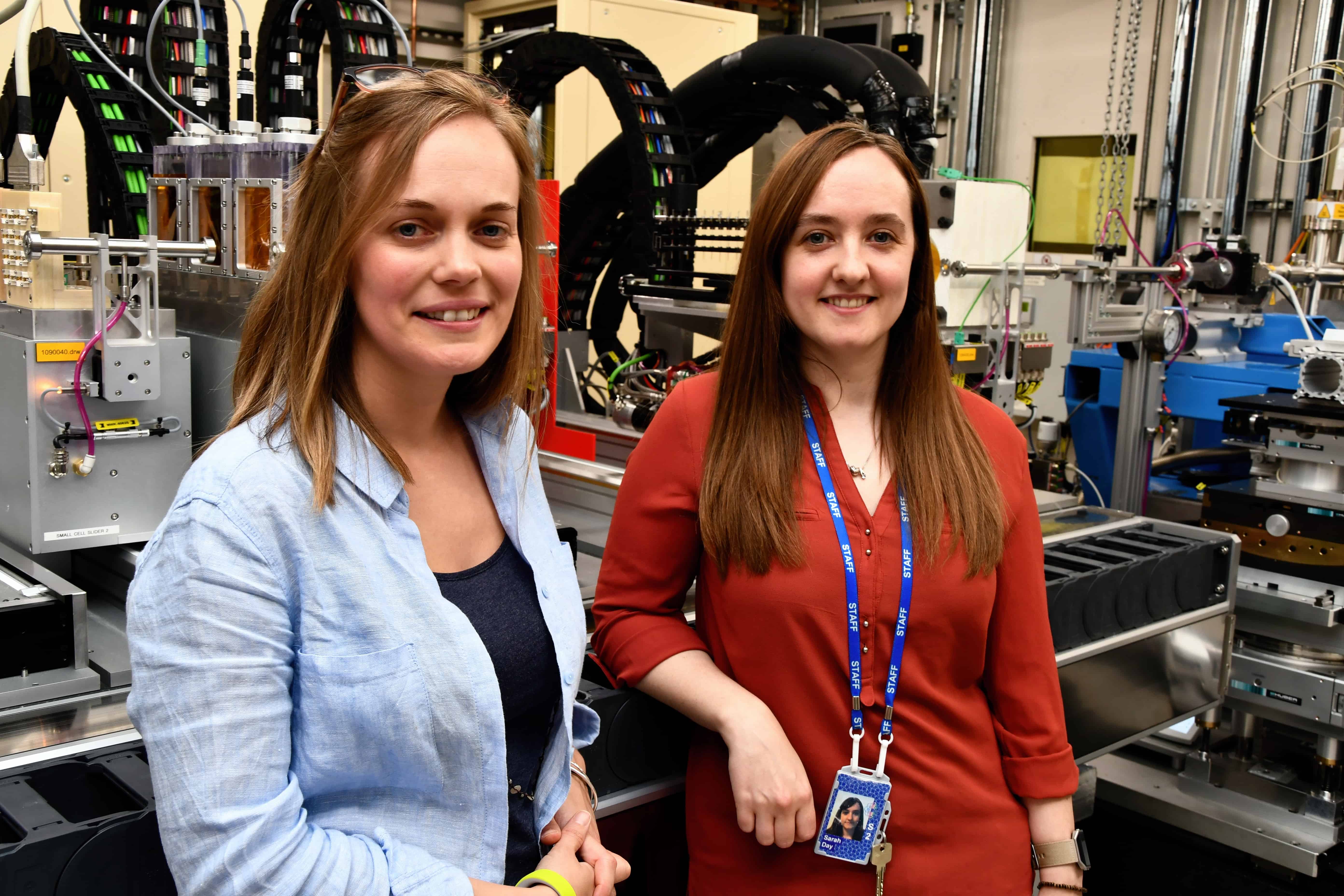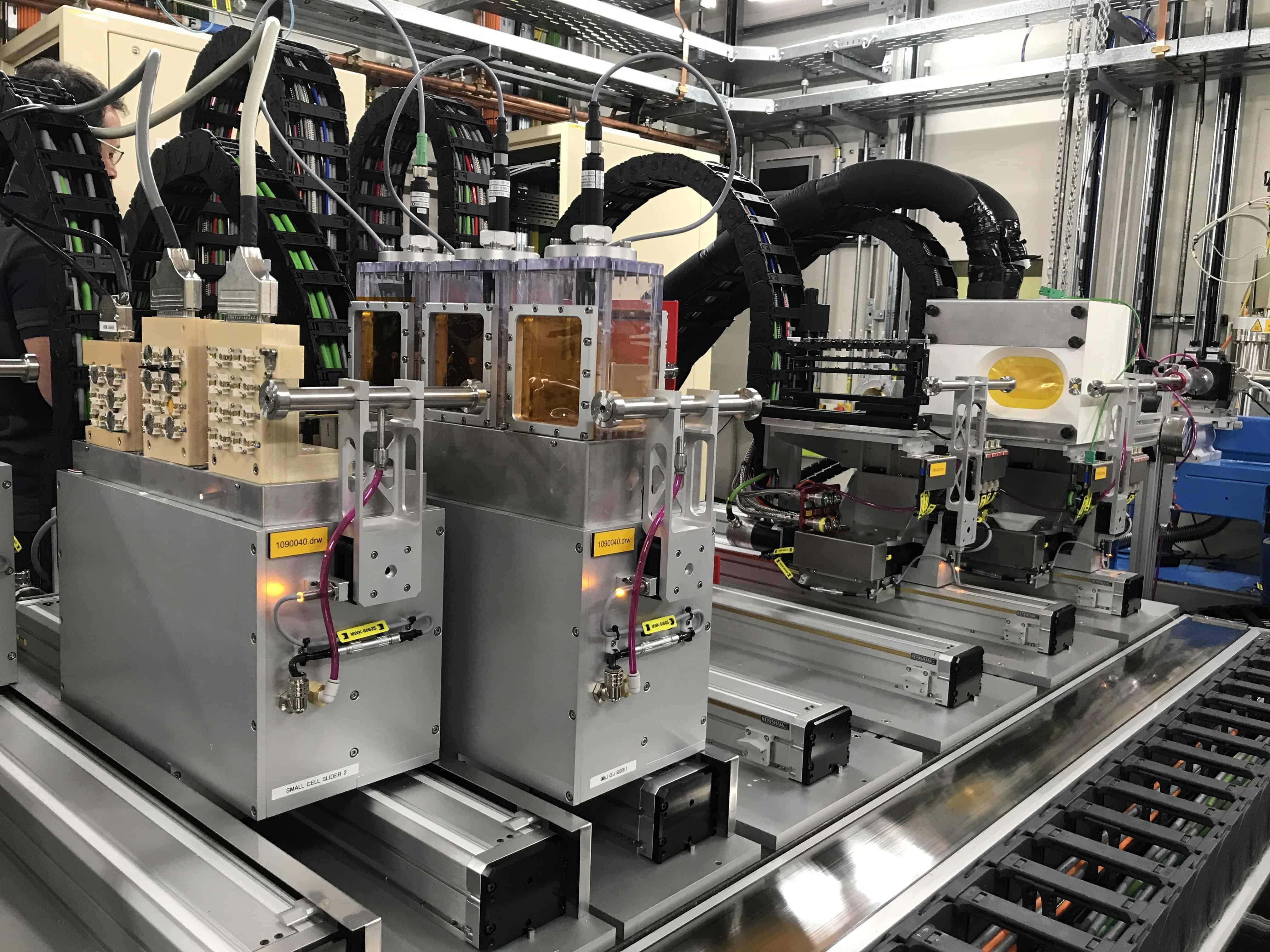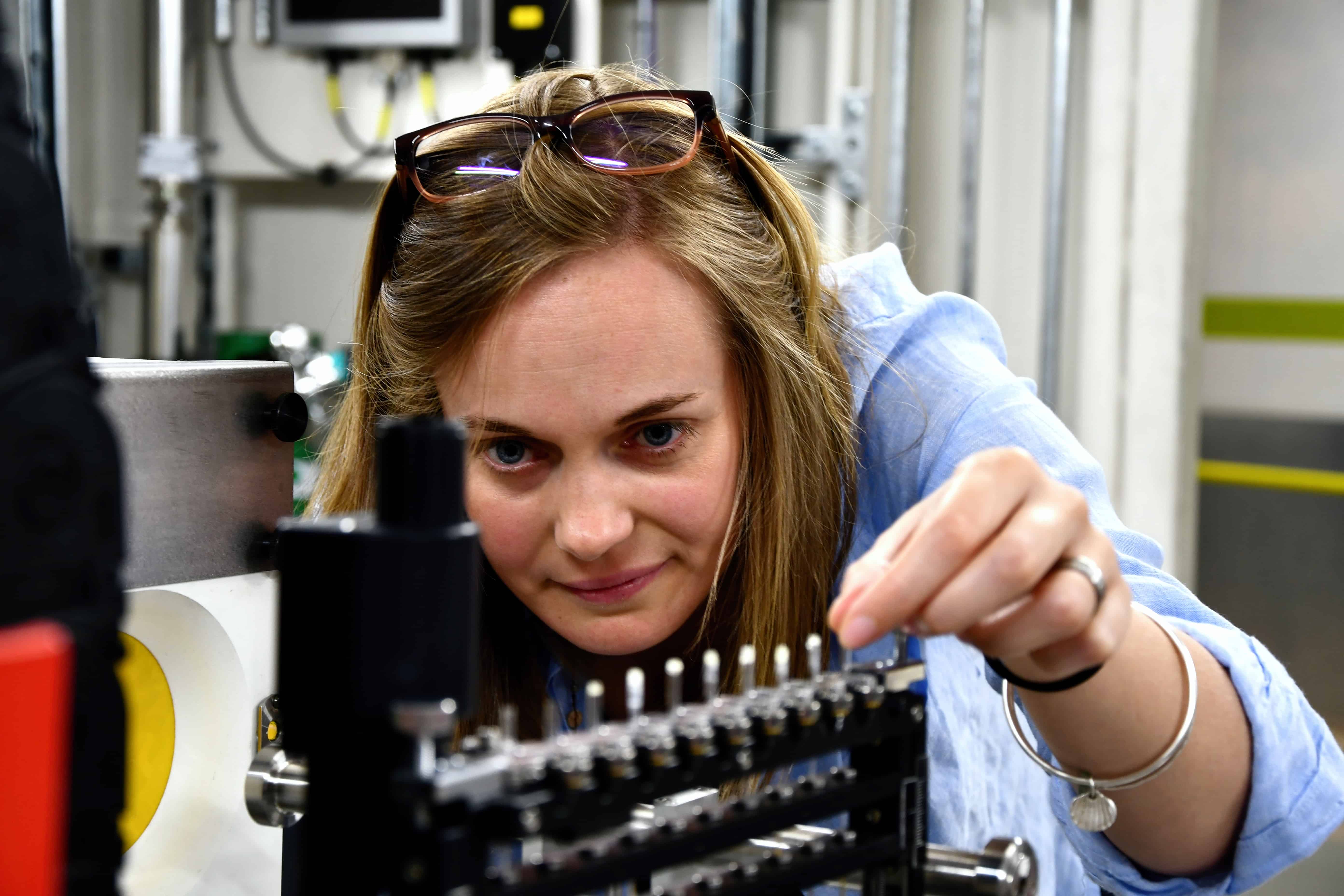
By Sarah Tesh
When I was teenager, we often drove past a massive metal “doughnut” that was taking shape in the Oxfordshire countryside – a doughnut more commonly known as Diamond Light Source. After years of passing by but never visiting, last Thursday I finally got to go inside the silver building housing the UK’s synchrotron.
I was there to find out about the longest ever experiment to take place at a synchrotron, which hit the 1000-day milestone on 2 July. The experiment was the first to be set up on the world’s only long duration synchrotron beamline and investigates the hydration of cements used in nuclear waste storage and disposal. My guides for the day were beamline scientist Sarah Day, experiment leader Claire Corkhill from the University of Sheffield and Diamond press officer Steve Pritchard.

Diamond Light Source is located within Harwell Campus – a scientific community with multiple research facilities. The Wembley Stadium-sized synchrotron came online in 2007 and currently feeds 26 X-ray beamlines, one infrared and one ultraviolet. The high-speed electrons that create the coherent light are produced by an electron gun and then accelerated in a linear accelerator and a booster synchrotron. Once travelling at nearly the speed of light, the electrons enter the doughnut – a storage ring roughly 180 m in diameter. At full speed the electrons complete a circuit 500,000 times a second.
The storage ring is a tetracontaoctagon – it has 48 straight sections joined together by bending magnets. When the magnetic fields change the electrons’ direction, the charged particles lose energy. This is emitted in the form of light that can then be directed into beamline experiments. As Diamond is a third-generation synchrotron light source, the straight sections contain insertion devices – arrays of magnets that cause the electron beam to “wiggle”, thereby increasing the intensity of light at the beamlines. Diamond’s beamlines lead to a range of experimental and analytical facilities including X-ray tomography, X-ray diffraction and infrared imaging.

The tour began in the office building, Diamond House, where oddly, there is a sword on display – ironically this is an award for health and safety. Apparently, there is also a ceremonial shovel somewhere that symbolizes the beginning of construction in 2003. The combination of the two seems more suitable for a horror/fantasy novel than a scientific facility but I digress.
Once in the doughnut building, you can stand over the storage ring where a yellow line on the radiation shielding blocks marks the electron path and red circles indicate where the beamlines branch off. A short walk around the ring takes you to the Long Duration Experiment (LDE) facility on beamline I11.
Sarah talked me through her typical week at I11. Every Monday, she and her colleagues put in the transfer line for the beam so it extends from the other I11 experimental hutch into the long duration facility. After testing the beam on a control sample, they run a program that performs X-ray powder diffraction on each experiment taking place. This takes one minute per sample and that’s it for data acquisition. The remainder of the week is spent processing the data using automatic programs (when I11 first started, this was done manually and was apparently extremely tedious), and supervising users performing short-term experiments in the neighbouring hutch.

Currently, there are seven experiments taking place alongside the cement study. These include a cold cell running at –30°C (the white box with the yellow window in the image above), which is being used to study how the composition of sea water affects how it freezes and thaws. Meanwhile, a year-long study on how pharmaceuticals behave in humid conditions has just finished and been replaced by an experiment simulating how water vapour affects amorphous silicates found in cosmic dust (the three orange boxes). It turns out that this study is a continuation of Sarah’s PhD, but when I asked which her favourite experiment is, it was like I’d asked her to name her favourite child – “I can’t pick – they’ve all got their own charm!”
Claire, meanwhile, obviously thinks hers it the best. She’s involved in multiple research projects investigating the geological disposal of nuclear waste, and even as we walked over to the café, she was running new experiment ideas past Sarah. Her main interest area concerns the underground nuclear waste repository planned for later this century. The giant pit should begin holding nuclear waste in 2075, be sealed off in 2175 and then store the nuclear waste for 100,000 years.

For such a massive undertaking, it’s extremely important to find the right materials and know how they will behave over such a long time. There are also social impacts and responsibilities involved. Indeed, Claire’s helping a social scientist look at the route from experiment to government policy.
This led nicely on to a question my colleague Hamish Johnston requested – thousands of years into the future (picture a Planet of the Apes-style world), how do you stop people digging up the radioactive waste because they think it’s a mysterious treasure trove, like the explorers breaking into pyramids in Egypt? Apparently, this is a huge topic of debate for many countries. Do you mark the pit to warn people (like they did with the pyramids) or do you let it be forgotten? Claire reckons don’t mark it – if it’s simply forgotten, you remove the curiosity factor (at least for a while).
Once in the impressive café that has everything (and in-between conversations about Harry Potter and beamline dancing) there’s a lot of talk about how easy collaboration is at Diamond – whether it’s between users and beamline scientists, or between the different facilities on the Harwell Campus. As well as the long duration experiment, which she only has to visit every now and again, Claire has performed experiments at the nearby neutron source ISIS and at other Diamond beamlines.
I had a great day at Diamond but barely scratched the surface of the science taking place there. With 28 beamlines in total, and another five planned by 2020, it will take many more trips for me to find out about everything (hint hint).



